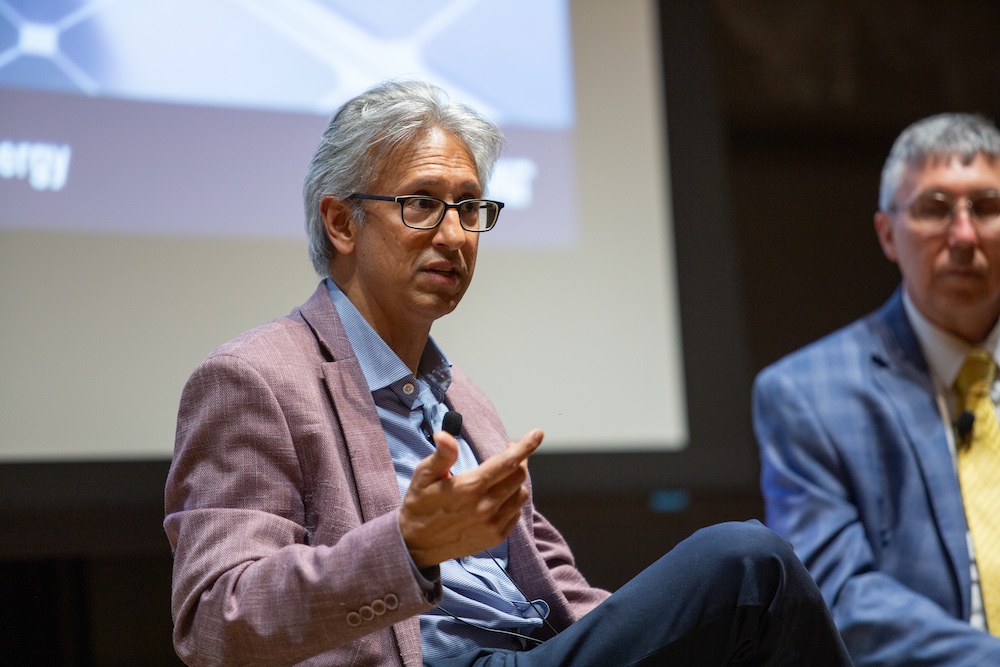
Kelley Travers
Manish Bapna, the head of state and CEO of the Natural Resources Protection Council (NRDC), among the USA’ biggest environmental companies, promoted for restoring climate action as a nationwide priority at the MIT Energy Effort’s 2025 Planet Day Colloquium. The Colloquium is part of the speaker series, MITEI Provides: Advancing the Power Transition, that highlights power specialists and leaders at the center of the clinical, technological, and plan remedies needed to transform our power systems. Bapna holds a bachelor’s level in electric engineering from MIT and master’s levels in company and political and financial growth from Harvard College. Prior to his function with NRDC, Bapna held leadership duties at the Globe Financial Institution, the Bank Details Center, and the Globe Resources Institute.
Q. Federal policy is presently going through a significant turnabout, yet you shared in your talk that many environmental and tidy energy initiatives in the last few years have been focused at the state degree. What are you seeing occurring in different states and regions of the country?
A. There are some great stories at the state level. It’s not only states like The golden state and New York City and Massachusetts that you would certainly anticipate to do fascinating things. Its states in the midwest, states in the southeast, that are typically the greatest recipients of tidy power investments and have a stake. And so, we’re seeing some intriguing dedications and interesting motion at the state level, despite business. Numerous business still want reliable, budget-friendly power, and they recognize that tidy power, solar and storage space, can be constructed faster than gas. If you’re a hyper-scaler trying to invest in a data facility or an AI center, what you desire is electrical power as rapidly as feasible. You’re actually not that rate delicate because power expenses are such a small component of your investments. You simply desire something constructed that you can really feel great around, that you can count on. You can really do things there.
Q. Despite having the incentives for clean power financial investment in the last few years, there were lots of regulations, and the result is that not as much infrastructure was built as many wished. Component of the difficulty was permitting issues that have developed over the years. How is the environmental community thinking of that obstacle?
A. The argument is that we have made it as well complicated. We have actually made it also difficult to develop things in America. Consider the various allowing programs currently, the complexities around getting authorizations to develop stuff and what we need. There is reality to it. That plays out in the energy space, where a lot of the ecological movement historically has actually been about just how to stop things from getting constructed. Thirty years back, that may have made good sense. Today, the means we’re going to fix these problems is not by quiting what we don’t like from obtaining constructed, but it’s actually, just how do you construct good stuff quickly? That is a very vital inflection point for the environmental building, is exactly how do you get behind structure clean energy, for example, quick? How can we speed up authorizations and transmission authorizations for clean power? Those are really topical inquiries.
Q. As a leader in the ecological movement, what are you doing, and what do you assume must be done, to make sustainability and environment activity a nationwide priority again?
A. A huge part of what we require to do is depoliticize climate policy. The worst thing that has actually taken place in the past 5, 10 years is how politicized energy and climate plan has become in this nation and we require to locate a way to move past that … Among the difficult things that’s occurred in the previous 10, 15 years is that the fragmented media environment has meant that the capacity to involve the public on concerns and stimulate and interact is far more challenging today than it was 10, 15 years back. I think the environmental motion, quite honestly, is still determining how to operate successfully and have that presence. NRDC was established in 1970 Earth Day, 1970, 20 million people were on the streets– that was 10 percent of the American public during that time. It caused virtually unanimous votes in Congress for the Clean Air Act, the Tidy Water Act, the Endangered Species Act. The amount of amazing bipartisan support for the atmosphere was a direct outpour of that ability to obtain individuals to care and to go on the roads. I believe to some level, if we actually intend to change the discussion, once more, we need to determine how to recreate that minute.
MITEI Offers: Advancing the Power Change is an MIT Energy Initiative speaker series highlighting energy experts and leaders at the center of the clinical, technical, and policy remedies required to change our power systems.For even more information on this and added occasions, browse through: energy.mit.edu/events